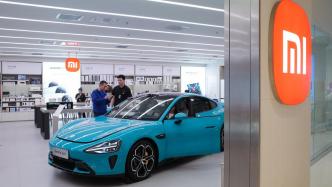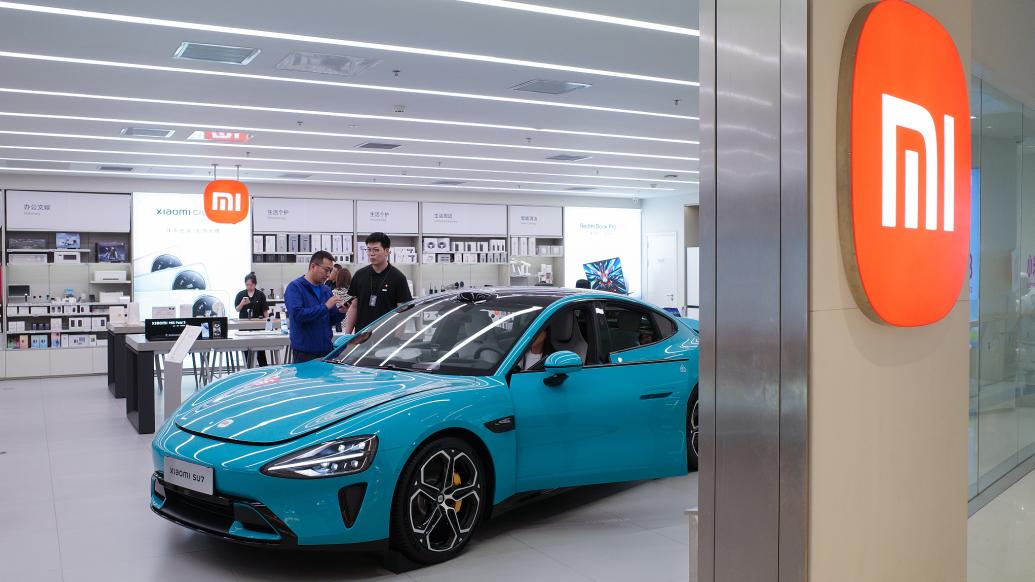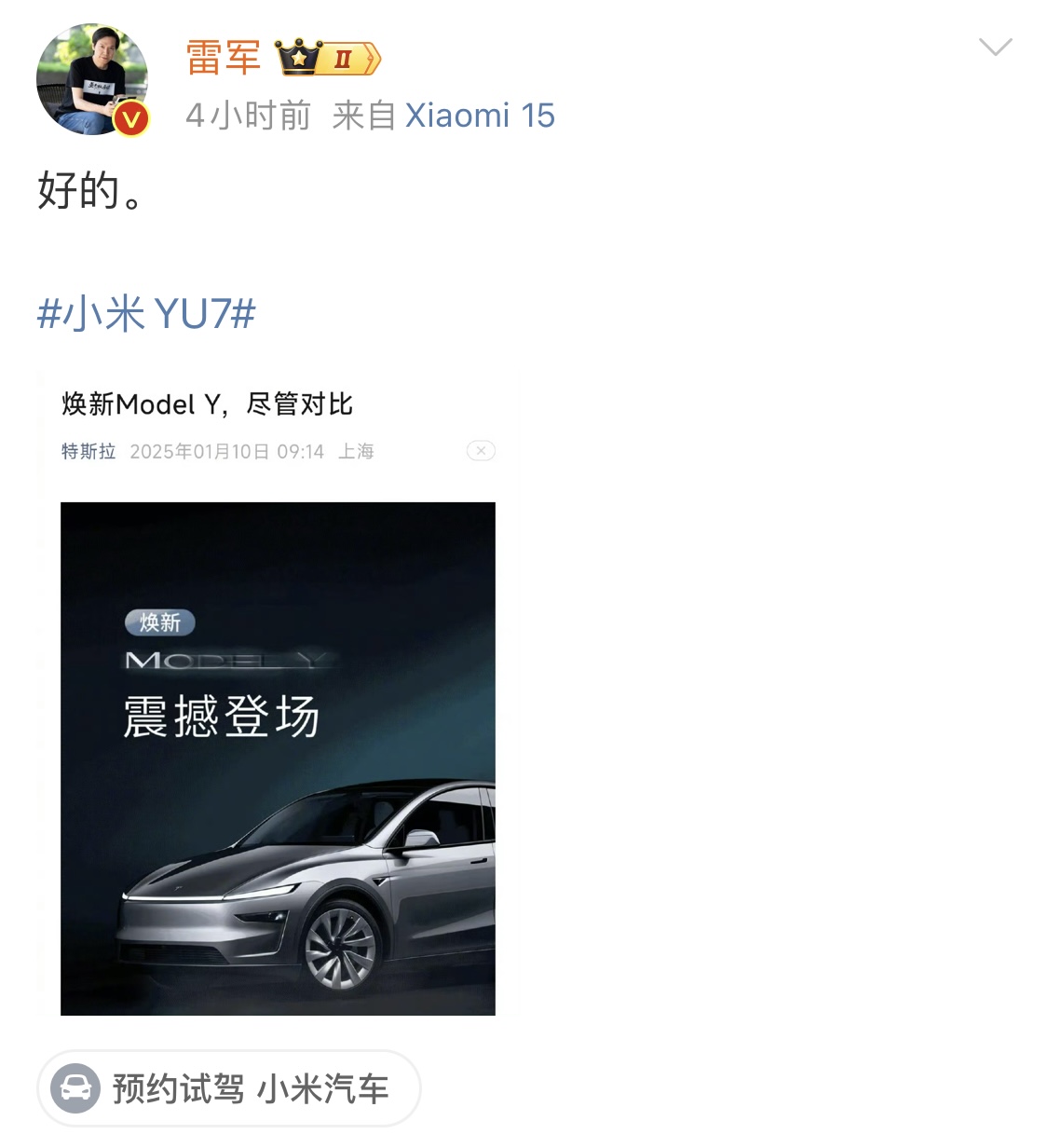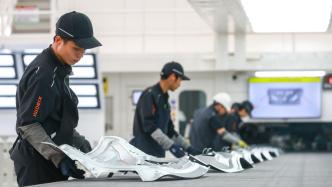
In the field of chip manufacturing, defective rate and failure rate are important indicators used to measure the quality of chips. They are usually expressed in PPM (parts per million). Those with particularly high yields will also be expressed in PPB (parts per billion).

Xiaomi SU7 Car
Among them, the "defective rate" is generally used to measure chips during the production process, and the "failure rate" is mainly used to measure chips during use after they are sold.
Generally speaking, chips with a defect rate of PPB level also have a failure rate of PPB level. However, this rule is no longer valid for Xiaomi SU7.
Recently, Lao Jin, a recently resigned electrical engineer from Xiaomi, revealed to Automotive Industry News that the silicon carbide power chips from Infineon, which are used in Xiaomi SU7, have already failed seven times. According to a rough estimate based on the delivery volume of about 30,000 chips, the failure rate is as high as one in five thousand.
"The product failure rate of Infineon, a German chip company, is usually controlled at the PPB level, but the failure rate of SU7 has reached a new high. The same chip is also installed in Zhiji LS6 and Haobo GT, which do not have so many problems," said Lao Jin.
Automotive Industry and Economy simultaneously sought confirmation from a person close to Infineon, who said: The failure incident did exist and Infineon should be innocent. The power chip will eventually enter the MCU (microcontroller). This step will test the overall design capabilities of the MCU regardless of whether Xiaomi develops it itself or outsources it.
"If this step is not designed well, many accidents will occur. For example, no matter how advanced Intel's chip is, if it is placed on a bad motherboard, it will still burn out, but you can't blame Intel's products."
It is understood that the electric drive of Xiaomi SU7 dual-motor version uses silicon carbide modules and chip products from Infineon, while the electric drive supplier of single-motor version is United Automotive Electronics. Lao Jin added that the dual-motor version has problems, and the silicon carbide power chip of the single-motor version also has many problems.
"And this is just the main area system. You can imagine the problems that may arise in other systems," said Lao Jin.
It should be pointed out that due to the different working environments and work requirements, the yield rates of automotive-grade chips and consumer electronics chips are also different: the automotive industry requires that the defect rate and failure rate of automotive-grade chips be less than one in a million, while the defect rate of mobile phone chips can be as low as two in ten thousand. Because mobile phones and tablets can be restored to use after a crash by restarting, automotive-grade chips do not allow this to happen.
If the average failure rate of Xiaomi's automotive chips is as high as one in five thousand, it is equivalent to just meeting the requirements of consumer-grade chips, but far from meeting the requirements of automotive-grade chips. Whether the full life cycle test of automotive-grade chips has been conducted remains to be verified. It is conceivable how great the safety risks of the entire vehicle caused by this are.
Are frequent failures bad luck or inevitable?
Combined with the failure rate data on power chips provided by Lao Jin and the many driving failures that have come to the public's attention before, it seems that Xiaomi SU7 has the hidden worry of "hurrying up and not cleaning up the mud", although the official has repeatedly emphasized that these are "low-probability events."
On May 8, a Xiaomi SU7 owner in Leiyang, Hunan said that during parking, the brakes suddenly failed and lost damping, an alarm sounded inside the car, and four abnormal messages such as "brake system failure" appeared on the screen. It was less than a month since the Xiaomi SU7 was picked up.
On May 13, Wang Hua, general manager of Xiaomi Group's public relations department, responded to the brake failure of Xiaomi SU7, saying that after verification, it was indeed a software misidentification. After analysis with engineers from the automotive department, it was confirmed that the reason for this was that the vehicle's braking system was switching between primary and secondary, which caused the driver to "lack the force to feel" when stepping on the pedal.
Wang Hua also said that the braking system switches between primary and secondary modes, but it does not mean the loss of all power. At this time, ESP intervenes in braking, and there is no complete failure of the braking system or loss of vehicle control. Xiaomi SU7 has also fixed this "low-probability event."
This is not the first accident involving Xiaomi SU7. On May 5, a Xiaomi SU7 owner in Xiamen, Fujian said that the new car broke down on its first drive: while driving on the highway, the car's large screen suddenly reminded: "Drive system failure, unable to shift gears." The car was then towed back to the delivery center, with the odometer showing only 39 kilometers.
Finally, Xiaomi agreed to replace the car, but the production may have to wait until next year. While waiting for the replacement car, the owner can receive a daily compensation of 150 yuan.
Earlier in mid-April, a Xiaomi SU7 in Chengdu, Sichuan, also experienced a driving failure 10 days after delivery. First, the central control low-voltage alarm sounded during driving, and then the car could not start.
According to incomplete statistics from the Automobile Industry and Economy, as of June 13, there were nearly twenty car owners who posted reports of quality problems with the Xiaomi SU7 on various social platforms (with order pages attached).
The problems that arise are varied, including but not limited to the faults mentioned above: spots on the paint surface after being exposed to rain, malfunction of the window lift buttons, poor contact of the audio cable causing unusual noises in the car, fenders falling off, etc.
Auto Industry and Economy tried to contact several car owners in Beijing, and they generally reflected that although Xiaomi's first product was highly finished, it was inevitably flawed.
One of the car owners also emphasized that the current problems of Xiaomi SU7 are definitely not limited to those that have appeared online, because many people are afraid of being attacked by Mi fans and dare not share them publicly.
"In the eyes of die-hard fans, all questions must be reasonable and all doubts are unreasonable."
In addition to quality issues, the imperfect after-sales network is also the biggest headache for Xiaomi car owners right now.
It is understood that Xiaomi relies on outsourcing and cooperation to deal with after-sales issues offline. For example, the outsourcing company responsible for after-sales in Beijing is Xianglong Borui. Including Xianglong Borui, Xiaomi Auto has 14 sales and service partners signed in the first batch in China. At present, the number of after-sales stores is still small. Some provinces have no after-sales points for the time being, and there are only two or three after-sales stores in super first-tier cities such as Beijing and Guangzhou.
As for the online after-sales system, Xiaomi Auto also needs to be improved. For example, in the "brake failure" case in Hunan, the car owner said that no one answered the call whether he called the Xiaomi Auto online service hotline or the SOS emergency call system. In response, Wang Hua said that Xiaomi Auto had urgently launched recruitment in April and expected the online customer service pick-up rate to increase significantly by the end of May.
On May 18, Xiaomi Chairman Lei Jun also mentioned in a live broadcast that in addition to increasing production capacity and continuing to improve intelligent driving, the most important thing for Xiaomi Auto in the future is to "develop after-sales service."
The hidden thread of Q1 financial report: Automobile urgently needs to catch up
On May 23, Xiaomi released its first quarter financial report. The report shows that both revenue and gross profit margin exceeded expectations. Thanks to the dual drive of hardware business and Internet services, Xiaomi Group's total revenue this quarter was 75.5 billion yuan, a year-on-year increase of 27%. Xiaomi Group's gross profit margin this quarter was 22.3%, a year-on-year increase of 1.8%.
Due to product launch timing issues, the profit performance of the automotive business is not mentioned in this report.
However, according to an estimate by a joint venture executive during the Beijing Auto Show, Xiaomi currently suffers a gross loss of 50,000 yuan for each SU7 sold.
In order to reduce the cost of car manufacturing, according to Lao Jin, Xiaomi adopted the method used in the mobile phone industry, that is, to lower the price offered by suppliers as much as possible, such as by introducing another competing supplier, letting the competing supplier quote a lower price, and forcing existing suppliers to lower prices.
In addition to bargaining with suppliers, another direction for Xiaomi Auto to reduce costs is to expand its scale - because only when the scale is large enough can the manufacturing cost of a single vehicle be lower.
According to auto blogger Sun Shaojun, Xiaomi Auto's orders exceeded 100,000 in early May. In order to shorten the delivery time, Xiaomi Auto's Beijing factory started the "double shift mode" in June. After starting the double shift production, its full monthly production capacity is expected to increase to nearly 20,000 vehicles.
In addition to the first phase of the factory being in full production, the second phase of the factory is also progressing smoothly. It is understood that the area where the Xiaomi Auto Phase II project is located has entered the demolition stage. According to the plan, the second phase of the Xiaomi Auto factory will start construction in 2024 and be completed in 2025, with an annual planned production capacity of 150,000 vehicles.
According to people familiar with the matter, the launch time of Xiaomi's SUV model will most likely coincide with the completion time of the second phase of the factory.
In addition, at the sales terminal, in order to motivate sales staff to sell cars, Xiaomi has increased the commission of 500 yuan per vehicle.
In fact, the overall situation of Xiaomi Auto is very good.
Xiaomi has 127.3 billion yuan in cash reserves, and the upward interweaving of new and old businesses in its "people, cars and homes" full ecosystem strategy has given Xiaomi Auto a more solid foundation for its future. Morgan Stanley also raised its target price for Xiaomi Group twice in less than two months, from HK$17.5 in mid-April to HK$25.
However, as the quality and after-sales problems listed above show, Xiaomi Auto is far from being able to rest easy. In the future, greater sales will also mean more problems.
Compared with mobile phones and home appliances, the quality of cars is directly related to the life safety of users. For every car manufacturer, building a high-quality production line and strictly controlling quality are the unquestionable bottom line. The icing on the cake marketing and design are just bonus points attached to this line.
For the personal safety of Mi Fans and the long-term development of the brand, Mr. Lei, let’s cherish the trust of the guinea pigs!
(Original title: "Exclusive | Chip failure rate hits a new high, Xiaomi SU7 failures may not stop for the time being")


